This image is also available as a pdf. Also see RU’s Green Campus Blog for detailed info on the week’s many events and activities!
Category: Faculty
#RUinFlint this Weekend
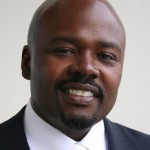 Roosevelt University journalism professor John W. Fountain and nine students in his JOUR 392 Convergence Newsroom class will be in Flint, Michigan, this weekend to report on the Flint water crisis. They’ll also have the opportunity to cover the Democratic candidates’ debate, broadcasting live from Flint on Sunday evening.
Roosevelt University journalism professor John W. Fountain and nine students in his JOUR 392 Convergence Newsroom class will be in Flint, Michigan, this weekend to report on the Flint water crisis. They’ll also have the opportunity to cover the Democratic candidates’ debate, broadcasting live from Flint on Sunday evening.
To follow along with the students’ experiences, just watch Twitter this weekend for the hashtag #RUinFlint.
For questions or more information, contact Dr. Marian Azzaro, Chair, Department of Communication (mazzaro@roosevelt.edu).
Looking Back at 2015
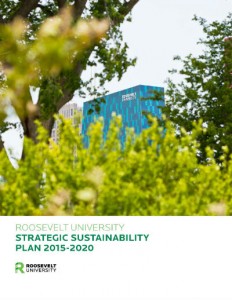
This weekend I finished one of my favorite annual writing projects: a comprehensive review of last year’s student and faculty activities and accomplishments in Roosevelt’s Sustainability Studies Program, published on the SUST Blog this morning.
2015 was a notable time of change, transition, and planning: we graduated 11 majors, moved to the College of Arts & Sciences from our longtime home in the College of Professional Studies, hired a new full-time faculty member, welcomed a part-time administrator, helped create the university’s first Strategic Sustainability Plan, held two student symposia and hosted other campus events, engaged in field trips and service learning in our classes, expanded our student internship resources, completed two rounds of departmental strategic planning, launched the Roosevelt Urban Sustainability Lab, and collaborated with the Department of Physical Resources on completing the research for RU’s first STARS assessment report.
I want to sincerely thank all my Roosevelt colleagues and students for all their hard work and enthusiasm on these projects and others. It was an eventful and rewarding year, and I’m hopeful that 2016 will be better yet!
RU Scores Bronze STARS Rating from AASHE: Some Personal Reflections
Last Friday night (Dec. 18th) at 9:30pm, my fellow STARS Reporting Team members and I submitted Roosevelt’s first-ever sustainability assessment report to the Association for the Advancement of Sustainability in Higher Education, resulting in our university’s earning a Bronze rating. As noted here on the SUST at RU Blog, this was a big milestone in our ongoing sustainability work as well as the culmination of research that began last January in my first SUST 390 Sustainable Campus special topics class, when 19 undergraduate SUST majors broke into teams to dig up and organize the massive amounts of data required across every aspect of the university functions — from academics to outreach to operations to administration and planning.

But while 2015 at Roosevelt was marked by this year-long effort to complete our first STARS self-assessment, the foundation work that made such a project conceivable, let alone feasible, started much earlier. Notably, in 2014 we undertook a major effort to develop a Strategic Sustainability Plan for Roosevelt, which was completed in November 2014, approved by the RU faculty and administration in February 2015, and released in June 2015.
The Plan is road map for the next five years’ worth of sustainability efforts, and we have now fulfilled one of its high-priority short-term goals in completing our first STARS report. This means we have even more data about where we stand as a university and how we need to move forward to improve our efforts in every facet of our operations, from what courses we offer to how we run student orientation to what food we serve in the dining center. The fact that all STARS data from the several hundred colleges and universities who have submitted reports, including our own, is publicly accessible also means that we can learn from what other institutions are doing in order to improve ourselves.
Starting Small, Thinking Big
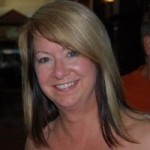 One reflection I’ve had in the wake of finishing our STARS report is about how seemingly small efforts can have big impacts. When I trace the origins of our work on this project, one key starting point is the independent study project SUST major Mary Beth Radeck (pictured at left) did in her SUST 395 internship with RU’s Physical Resources Dept in the spring of 2014. Mary Beth researched campus sustainability planning at US colleges and universities, and her final report was an analysis of those plans as well as a fully fleshed-out process and timeline (pdf) for RU to engage in its own sustainability planning process. This proposal was so compelling and well-researched that we simply had to move forward and do it! While I wouldn’t call Mary Beth’s effort “small” by any stretch of the imagination, the fact that such a major initiative of the university began as one undergrad’s research project is testament to the power of a good idea and the value of thinking big.
One reflection I’ve had in the wake of finishing our STARS report is about how seemingly small efforts can have big impacts. When I trace the origins of our work on this project, one key starting point is the independent study project SUST major Mary Beth Radeck (pictured at left) did in her SUST 395 internship with RU’s Physical Resources Dept in the spring of 2014. Mary Beth researched campus sustainability planning at US colleges and universities, and her final report was an analysis of those plans as well as a fully fleshed-out process and timeline (pdf) for RU to engage in its own sustainability planning process. This proposal was so compelling and well-researched that we simply had to move forward and do it! While I wouldn’t call Mary Beth’s effort “small” by any stretch of the imagination, the fact that such a major initiative of the university began as one undergrad’s research project is testament to the power of a good idea and the value of thinking big.
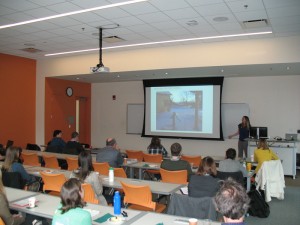
Similarly, the SUST 390 class (pdf of syllabus) that worked on researching the baseline data we needed to do the STARS report was itself an experiment from the ground up, one for which we had no blueprint — only faith in the power and potential of student researchers to tackle a complex and extremely time-consuming project in a finite amount of time. While we were exploring unknown territory in the course (which frankly added to its inherent excitement, for me), the value here was obvious: students came through with a tremendous effort and they learned an incredible amount about their university and the STARS system in the process.
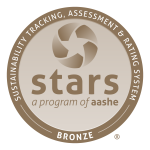 Why I’m Happy We Got Bronze
Why I’m Happy We Got Bronze
With sustainability rating systems like LEED or STARS, it’s admittedly easy to get caught up in the chase for achieving the highest rating possible. That’s part of the point of such rating systems: to incentivize institutions to earn high ratings that reflect well upon their efforts and burnish their green reputations. Let’s face it: all of us like accolades, right?
But merely focusing on the particular level of an institution’s STARS rating — gold, silver, bronze, etc. — misses the real significance of undergoing this process of self-reflection and institutional assessment. So here are a few reasons why I’m happy with our Bronze rating here in 2015:
- Just getting to Bronze itself is a big deal. The STARS assessment system is thorough and exacting, and amassing data and evidence to warrant a Bronze-level certification is difficult, not only in terms of what you have to do to get there, but also in the process of documenting those efforts.
- Notably, many of the STARS-reporting institutions that are at Silver or Gold achieved those designations in their 2nd or 3rd reporting cycles. So the fact that RU did this in our first go-around is a fine thing indeed.
- Pursuing sustainability at a college or university campus — let alone a town or a city — is a highly complex and always ongoing task. Our Bronze designation is a literal statement that (a) we’ve accomplished a lot so far, and (b) we’ve still got a long way to go. This in itself is great incentive to keep moving forward, not the least because (like the pursuit of scientific knowledge itself) we will never be done.
- The teamwork and dedication that made our STARS report possible in the first place is inspiring. This might be the biggest payoff of all: the joy and rewards of working together on a worthy project on behalf of our institution.
Giving Thanks
On that last note, I want to thank the fellow members of our STARS Reporting Team (Rebecca Quesnell, Maria Cancilla, Graham Pickren, Brennan Morrow, and Shannon Conway) who undertook this in the fall of 2015 as a collaboration between the Department of Physical Resources and the SUST Program’s new Roosevelt Urban Sustainability Lab; Paul Matthews, Assistant VP for Planning & Operations, for this unflagging leadership of all things sustainable at Roosevelt; and the students in my SUST 390 Sustainable Campus class last spring (Cassidy Avent, Yessenia Balcazar, Maria Cancilla, Shannon Conway**, Colleen Dennis *, Jordan Ewbank*, Courtney Hackler, Kyle Huff, Reece Krishnan, Tom Lewallen**, Melissa Maslowski, Ana Molledo*, Kelsey Norris*, Jennifer Paddack, Rebecca Quesnell*, Emily Rhea, Deidra Sharp, Sera Sousley** and Jesse Williams*.
(*graduated May 2015; ** graduated Dec 2015).
Fall 2015: Welcome Back to RU
I would like to extend a warm welcome to my students, advisees, and colleagues to the 2015-16 academic year at Roosevelt. Here’s to an excellent Fall 2015 semester! With the recent migration of the SUST program from RU’s College of Professional Studies to the College of Arts & Sciences, my office has moved a few blocks south on Michigan Avenue, from the Gage Building to the Auditorium Building (AUD 829). As noted on my Contact page, phone and email are the same as ever. Please drop by and say hello when you get a chance. And check out this post from the SUST Blog for what’s ahead this year in our program.

Writing Urban Nature: A One-Week Intensive Summer Course in Chicago, May 18-22
 Still plenty of room in this new one-week-intensive summer course! Pre-session is next Wed., May 6th, at 4:3pm in Gage 218. For more detailed information on my summer intensive course, check out this Writing Urban Nature preview; and share a pdf version of the image above via email.
Still plenty of room in this new one-week-intensive summer course! Pre-session is next Wed., May 6th, at 4:3pm in Gage 218. For more detailed information on my summer intensive course, check out this Writing Urban Nature preview; and share a pdf version of the image above via email.
Interdisciplinarity, Sustainability, & Service Learning
A little while back, I was asked by some of my environmental studies colleagues outside of RU to briefly describe my take on interdisciplinary scholarship in under 200 words. Here’s what I came up with:
An interdisciplinary scholar can speak different disciplinary languages, recognize how they work together, and use that facility to say something unique in the process. Interdisciplinary scholarship is about integration: fitting things together in a complementary, cohesive, creative fashion so that the whole is niftier than the mere sum of its parts. I’ve sung in choirs where men and women blend the different pitches and timbres of their voices in 4, 6, even 8 part harmony. At its best, interdisciplinary work is like that: creating beautiful music from difference, even the occasional dissonance, such as in the give-and-take dialogue of interdisciplinary team-teaching. While most university landscapes remain dominated by disciplinary silos, interdisciplinary teaching and scholarship open up new ground for discovery and connect faculty and students working on problems of mutual interest.
The last few years I’ve taught in and directed the Sustainability Studies program here at Roosevelt, the curriculum for which was designed in a consciously interdisciplinary fashion to integrate methods and insights from the natural and social sciences as well as the arts and humanities. My own academic background in biology and literature, as well as my many years of working within a multidisciplinary faculty teaching general education to returning adult students in RU’s College of Professional Studies, means I have keen interest in integrating knowledge and research methods from the humanities and natural sciences — something that is an excellent fit within the inherently interdisciplinary endeavors of environmental studies and the newly emerging sustainability studies. In a previous post, I reflect on the relevance/importance of the arts and humanities to matters of environmental science and policy.
Another thought is that service learning provides a powerful vehicle for interdisciplinary teaching and learning — both within the context of a single (potentially interdisciplinary) class as well as in the collaboration of two or more courses from different academic departments. A fascinating model for this is the Sustainable City Year Program, pioneered recently by the University of Oregon and spun off in various ways by other US colleges and universities. This is an action-oriented and sustainability-directed approach to interdisciplinary learning and scholarship that can be tailored to the particular strengths and capacities of a given university.
Sustainability and Biodiversity at the Field Museum
Last Monday, as a warm 60+ degree (F) day enveloped downtown Chicago in a splendid preview of spring, my students and I hiked from Roosevelt’s Gage Building in the Loop to the lakefront, where we strolled southward to that great edifice of natural history and biodiversity, the Field Museum. Once there, we met up with Carter O’Brien, the Museum’s sustainability manager (who basically created the job over a number of years after spearheading the FMNH’s recycling program). Carter gave us a comprehensive walking tour of the museum’s grounds, community garden, and loading dock.

Along with many of staff and researchers at the FMNH, Carter has spearheaded the museum’s efforts to green its practices in energy consumption, waste management, food service, recycling, transportation, exhibit design, and gardening. Despite being an institution dedicated to studying and conserving the world’s rich trove of biodiversity, the Field Museum until recently was not at all sustainable in its own operations, an irony not lost on environmental advocates such as Carter and many of his museum colleagues. Now the FMNH is a recognized leader in transforming old buildings into sustainably-managed facilities, as it recently garnered a LEED Gold rating on its operations and maintenance from the US Green Building Council, only the 2nd existing museum building in the US to do so, and it has just received a $2 million grant to redevelop its grounds within Chicago’s famed Museum Campus in ways that enhance biodiversity, water conservation, and public education.
Carter brought us inside through the seemingly ancient (and surprisingly small) loading dock, thorough a phalanx of heavy doors, narrow passageways, and claustrophobic elevators (all part of the FM’s 19th Century charm), and to the Botany research division, one of the four major research/collections areas of the museum. There we met up with the equally ebullient Dr. Matt Von Konrat, who has many titles at the museum but is best known as an early land plant botanist (which means he studies mosses and liverworts both here and abroad) and the Head of Botanical Collections at the museum.
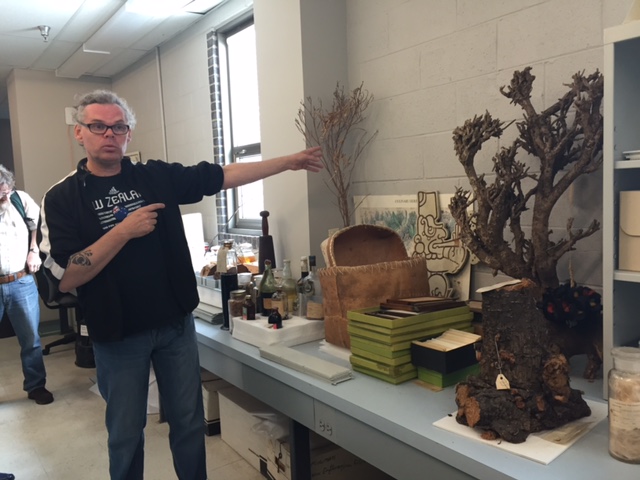
Dr. Von Konrat was kind enough to set up a sampling of preserved plant specimens from the Museum’s vast collection, which when arrayed on a huge wooden table represented a journey of 500 million years of land plant evolution. Many of these examples had special significance as type specimens, which are recognized as being archetypal examples of the species that are used for benchmarking certain key identifying characteristics.
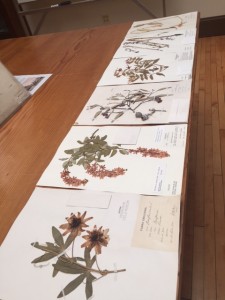
One plant, a particularly tiny moss, held special significance in a recent court case about Burr Oak Cemetery scandal in the far South Side Chicago neighborhood of Dunning. Cemetery caretakers dug up several hundred human remains and dumped them in a mass grave in order to sell additional plots in the cemetery over a several year period. The moss was part of forensic evidence analyzed by Dr. Von Konrat that proved the involvement of cemetery employees in this heinous crime. The story illustrates the profoundly important role that environmental evidence can play in forensics, and the potential value in aligning the study of botany (and sustainability) with that of criminal justice.
After both of these splendid tours, my students and I ventured forth into the public area of the museum — its exhibits, naturally! — where we inspected the notable (and LEED Gold certified) conservation exhibit, Restoring Earth, which documents FMNH efforts to conserve natural and human communities in South America as well as restore local prairie, woodland, and wetland ecosystems here in the Chicago region.
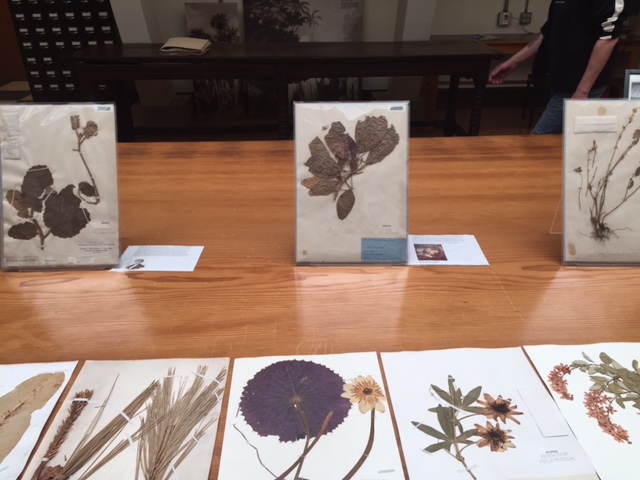
SUST 390 “Writing Urban Nature” Course Preview (Summer 2015)
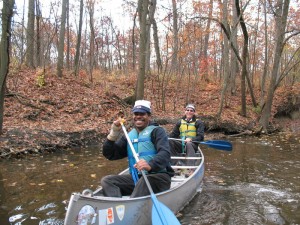
This May 2015 one-week-intensive section of SUST 390 Writing Urban Nature is an environmental literature and writing special topics course distinguished by in-the-field explorations of various natural and urban environments. The class provides a unique immersive experience in “nature close at hand” at sites of ecological and cultural significance in the Chicago region. Strong emphasis on close observing place and people; walking and exploring landscapes and neighborhoods; and reflecting on / discussing compelling ideas, stories, and images of urban nature, broadly defined.
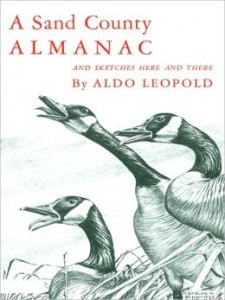 Assigned readings will include selections from May Watts, Reading the Landscape of America; Aldo Leopold, A Sand County Almanac; Joel Greenberg, Of Prairie, Woods, and Water; blogs such as City Creatures and The Nature of Cities; and other texts. The reading list will be distributed well in advance of the class so that students will have time to read ahead prior to the week’s explorations and discussions.
Assigned readings will include selections from May Watts, Reading the Landscape of America; Aldo Leopold, A Sand County Almanac; Joel Greenberg, Of Prairie, Woods, and Water; blogs such as City Creatures and The Nature of Cities; and other texts. The reading list will be distributed well in advance of the class so that students will have time to read ahead prior to the week’s explorations and discussions.
Daily activities will consist of field excursions to sites of interest in Chicago’s urban landscape; discussion of assigned readings; quiet time for personal reflection, journal writing, and photography; and potential service work for local environmental organizations. Students’ daily journal and photo archive will provide material for a personal/critical reflection essay (due one week after the class ends) that incorporates text and image, critically analyzes selections from the course reading list, and reflects on the student’s individual experience in the class. Collectively, the class will produce an online project (“Chicago’s Urban Nature”) as part of the SUST at RU Blog that features creative/reflective writing that reflects upon their experience and incorporates both text and image.

Potential sites we will explore include Chicago’s lakeshore parklands and public spaces, the Chicago River (on foot and/or by canoe), neighborhood parks of cultural and ecological significance, nature centers on the North and South Sides, selected urban farms within the city, and the natural and industrial lands of the Calumet Region on the far South Side. The week’s schedule is still under development, but the varied locations will give students an opportunity to explore many seldom-seen parts of the city within a unique learning context. Most of these activities will be free, though a small fee may be charged to cover certain trips (e.g., canoe trip on the Chicago River). Public transportation will be used to access most sites. Carpooling options will be discussed at the May 6 pre-session (see below).
Who Should Take this Class

SUST 390 Writing Urban Nature is cross-listed with ENG 340 Writing Urban Nature and PLS 371 Humanities Seminar II. SUST majors can take SUST 390 Writing Urban Nature for major credit as a SUST core course, as a Relevant Elective within their major, or as a general elective. Students who have taken a previous version of SUST 390 are eligible to take this version for credit. English majors may use this as an upper-level ENG credit or as an elective course in SUST or ENG. Students in the PLS Flex-Track program may register for PLS 371 for Humanities II credit as an upper-level general education course, or take SUST 390 for elective credit.
Registration Information
- SUST 390-X1 Writing Urban Nature — CRN 30666 / Pre-req: ENG 102 with a grade of C- or better
- ENG 340-X1 Writing Urban Nature — CRN 30689 / Pre-req: ENG 220 with a grade of C- or better
- PLS 371-X1 Humanities Seminar II — CRN 30690 / Pre-req: PLS 370 or concurrent; admission to Flex-Track program for adults or advisor consent
Meets May 18-22 from 10:30am to 5pm at RU’s Chicago Campus. Required pre-session on May 6 from 4:30-6pm, room TBA. Some additional work online required; final assignment due May 29.
For more information, contact Prof. Mike Bryson (mbryson@roosevelt.edu or 312-281-3148).
Encountering the Wild: Meditations and Musings from Crested Butte, Colorado
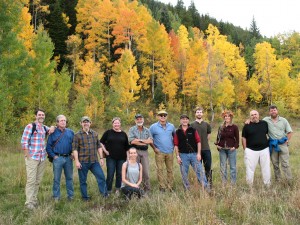
This past September, I joined a group of writers convened by Gavin Van Horn (of the Center for Humans and Nature in Chicago) and John Hausdoerffer (a professor at Western State Colorado University and the director of WSCU’s Headwaters Project) for a much-anticipated writers’ retreat in the beautiful mountain town of Crested Butte, CO. The idea was to gather invited writers together to shares conversation, ideas, outlines, and initial jottings as a means of kicking off a new book project to be co-edited by Gavin and John called The Relative Wild. As they describe it, this is a collection of stories and essays that
will explore how human and ecological communities co-create the wild. The “myth of the pristine” — that nature is most valuable when liberated from human presence — is quickly being supplanted by “the myth of the humanized,” the assertion that nothing is untouched by human influence, and therefore one may embrace ecosystem change, even extreme changes, as “natural.” We suggest that both of these myths deserve equal scrutiny, and that one way to do so is by celebrating the common ground of the relative wild: the degrees and integration of wildness and human influence in any place.
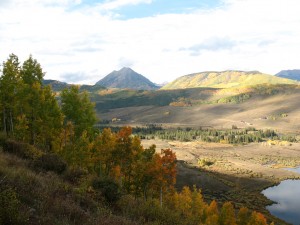
Having participated in a previous CHN writer’s retreat at the Indiana Dunes National Lakeshore for the forthcoming book City Creatures (Univ. of Chicago Press, 2015), I know firsthand how extraordinary an opportunity it is to take time out from the busy schedule and harried demands of ordinary life to mingle with talented and creative writers all focused on a common project. The fact that the Relative Wild gathering transpired in a beautiful mountain setting at the autumnal equinox was even better. Over the course of two and a half days, we had many great conversations, took hikes in the stunning mountains and valleys outside of Crested Butte, ate meals together, used quiet time for writing and reflection, and engaged in several productive and inspiring writing workshop sessions led by the esteemed naturalist and prolific nature writer, Robert Michael Pyle.
My planned contribution to the book will be co-written with Mr. Michael Howard, the Executive Director and founder of Eden Place Nature Center in Chicago, and is tentatively entitled “Cultivating the Wild on Chicago’s South Side: Stories of People and Nature at Eden Place.” What follows below is an example of the writing we were assigned to do at writers’ workshop. Here, Bob Pyle challenged us to closely observe and meditate on our immediate surroundings and experiences in Crested Butte that weekend, and to write about them as evocatively as possible. Whether or not we connected these observations to our planned essay/story topics for the book was optional. His writing prompt — to start with the phrase, “Encounter, here . . .” — was both deceptively simple and (for me) highly challenging. This is what I wrote.
Three Encounters (in response to Bob Pyle’s writing prompt)
by Mike Bryson
Encounter: Crest Butte, CO
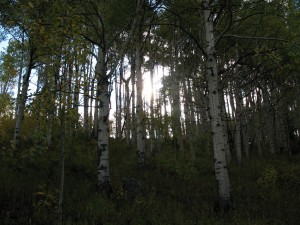
September 21 — We leave our lodge on foot here in town, walk for what only seems to be a few blocks (hardly far enough to go anywhere at home), and suddenly, we’re on a mountain trail. We hike high above the winding Slate River, through intermittent stands of turning-gold aspen. I gawp at the massive bulk of Mount Crested Butte, Gothic Mountain, the interplay of rock and tree line, the contrasting beauty of the valley, the rich topography that is overwhelming in its newness and scale.
The damp, rich, loamy smell of the forest, though, makes just as strong an impression. Aspen leaves are scattered on the trail, gold, green-dappled, as beautiful as mountains. My companions, old friends and new, chuckle at my boyish “golly gee” reaction to this place. I am a rube in this wilderness, as stupefied as a farm boy in New York City.
September 22 — After dark, I gather six aspen leaves of varying size and hue, each jeweled with perfect drops of rainwater. I blot them dry in my room, press them between the pages of Gary Snyder’s Mountains and Rivers without End. It’s comforting to know that my wife and children will consider this a worthy gift upon my return.

Encounter: Metamora, IL
Reeser family reunion at the Mennonite Heritage Center, east of Metamora in central Illinois’ Woodford County. The heart of Illinois farm country, just northeast of Peoria, soils built by centuries of deep-rooted prairie growth, decay, regeneration. Corn and soybeans now dominate this quiet land, the rolling soft green hills of the Mackinaw River valley belying the fact that this is in part a built environment, made and maintained with tractors and chemicals. The ditches and streams here are as vulnerable to nitrogen runoff from the seasonal applications of anhydrous as Oh-Be-Joyful Creek is to heavy metal contamination from the Daisy Mine upstream of Crested Butte, Colorado.
After our family’s potluck dinner and visiting with elderly relatives over rhubarb pie and weak coffee, we walk over to a half-acre prairie restoration dedicated to my great-great-great grandfather, Christian Reeser, a Swiss-German immigrant who lived and farmed to age 104. Once much of Illinois looked like this. Tallgrass prairie: 1/100th of one percent remains.
Encounter: Chicago IL
September 17 — Eden Place Nature Center, in the Fuller Park neighborhood on Chicago’s South Side. Michael Howard and I sit and talk in the trailer that serves as office, classroom, conference area, and tool shed at Eden Place, a 3.4-acre farm and nature center wrought from the desecration of an illegal waste dump in the middle of a residential area in one of Chicago’s poorest, smallest, most isolated, and most polluted neighborhoods. Outside, goats bleat, chickens fuss and cluck, two ponies graze quietly.
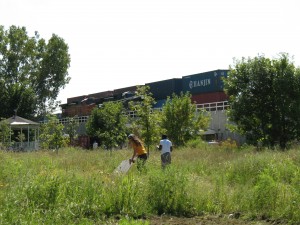
The early stages of an oak savannah and prairie restoration take up the north half of this refuge, the only bona fide nature center on the entire south side of the city. Modestly sized and brightly painted barns stand against the tall concrete embankment of the railroad that runs along Eden Place’s western border. Exhaust-streaked trains, passenger and freight, clatter by at short intervals. Too often, freight lines stop and idle here, engines rumbling, diesel fumes thick in the air. Raised-bed gardens sport squash, beans, peppers, tomatoes, herbs.
“What is this book supposed to be about again?” Michael asks. “Remind me. I’m sorry — this has been a long week.” He is exhausted by his new job at the Illinois Department of Natural Resources, but relieved to have stolen a few rare moments of down time at Eden Place. An oasis in the city.
“The Relative Wild,” I reply. He nods, looks thoughtful.
“When we created Eden Place,” he said, “the thought was this: if we build it, the wild will come.” And so it has over the last fifteen or so years. Red-tailed hawks. Migrating songbirds. Raccoon, opossum, skunk. White-tailed deer, seen in the damp mist at two in the morning. Urban wild amidst an imposing hardscape of pavement and gravel, humble houses and gritty vacant lots, cut off and bounded by physical barriers of twelve-lane expressway, railroads, abandoned industrial yards. Build it, the man says. The wild will come.
Crested Butte, CO
September 23, 2014
